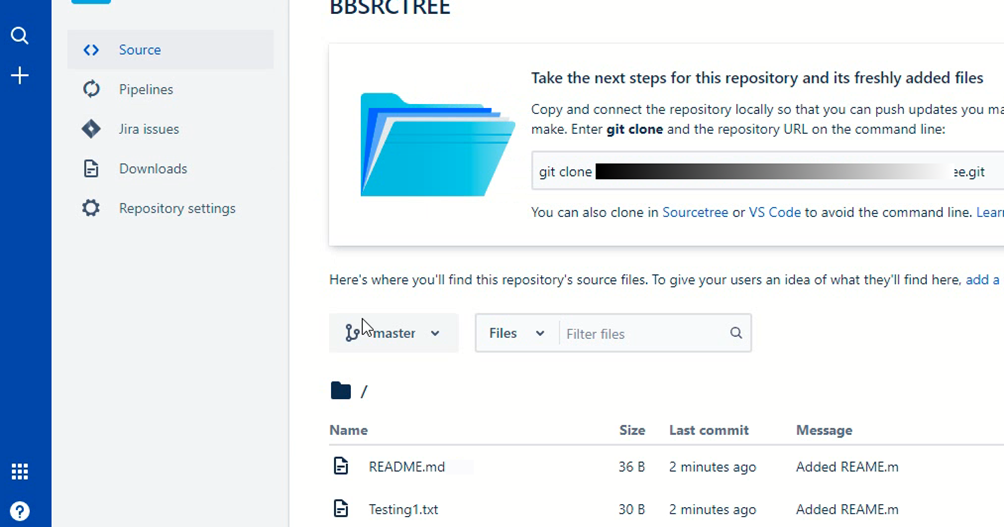

It looks like it get hit by the Siteminder form as it is not using basic authentication (i think so).
#Move from beanstalk to bitbucket using sourcetree password
Infact, I even tried by giving username and password in the clone command itself.

How can we make Git to clone via basic authentication ? No it does not prompt for the credentials.

Now use this URL in the URL/Path field for the Remote details when you add a remote to your local. Once you see your new repository in the list, right click on it and click Copy Project URL to Clipboard. This will allow you to create a new repo on Bitbucket. But I guess, i was wrong, it seems Git does not use basic authentication to clone the repositories.ģ) Git clone fails from the command prompt. Click the buttom at the bottom Create New Repository. As you said, it uses Rest API and its same the curl command also uses to connect to Bitbucket.Ģ) We assumed that if Siteminder is set to accept basic authentication it would work for Git clone also. And, also sourcetree is able to fetch the list of the repositories. i can say this with confirmation because curl command works absolutely fine. I will try to answer all of them.ġ) Yes, Siteminder has been configurred to accept the basic authentication. But when i try to clone it, it fails by hitting the Sitminder form.Ĭan someone please help to resolve this problem. Though, it is able to create a remote account with basic authentication and is even able to fetch the list of the repositories. We tested it by using some curl command to fetch list of repos and projects from Bitbucket and it worked successfully.īut when we try to clone a repository in SourceTree by using basic authentication. We have enabled basic authentication in Siteminder also so that it can accept the login credentials being send via basic authentication. We found in SourceTree there is feature to enable basic authentication. It is working absolutely fine for us for logging into Bitbucket from the browser.īut when we try to use SourceTree to clone a repository from Bitbucket. Also, we have created a login form in Siteminder to manage the authentication for the users. Any other commits you make to my-updates will also appear on that branch.We have setup Siteminder for the SingleSignOn authentication for Bitbucket. Open Sourcetree and notice that your repository has Uncommitted changes.įrom the Unstaged files list, place a checkmark next to the survey.html file (and any other files with uncommitted changes).įrom the Confirm Stage? dialog, click OK.Ĭlick the Commit button at the top to commit the file.Įnter a commit message in the space provided, something like Answered questions.Ĭlick the Commit button under the message box. When you switch back to the view, you see that the file has been committed but not pushed to the Bitbucket repository.įrom Sourcetree, click the Push button to push your committed changes.įrom the dialog that appears, click OK to push your branch with the commit to Bitbucket.įrom Bitbucket, click the Source page of your repository. You should see both branches in the dropdown. Make a change to the branchįrom the repository in Sourcetree, click the Show in Finder button. Now you've got a branch in Bitbucket and it's checked out to your local system, allowing you to work on and push that separate line of code. To do so, click the Check out in Sourcetree button.įrom the Checkout Existing dialog in Sourcetree, click Checkout. If you aren't sure what to name your branch, go with something like my-updates.Īfter you create a branch, you need to check it out from your local system. You'll see that you already have one branch - your main branch.Ĭlick Create a branch in the top right corner.Įnter a Branch name and click Create. However, we're going to create one from Bitbucket for the purposes of this tutorial.Ĭlick Branches from the left navigation. Because branches aren't only a Bitbucket concept, you can create one locally. Now that your repository is all set up, next comes the fun part.

If you added or modified other files, you'll see those as well.Ĥ. You should see the survey.html file you modified. Display the status of the repository with git status. Make your changes, big or small, and then save and close the file.įrom your terminal window, you should still be in the repository directory unless you've changed something. Open the survey.html file (or whatever you named it) with a text editor. Like the file mentions, you can go as crazy or as simple as you like. Now, it's your turn to makes some changes to your repository. * my-updates -> origin/my-updatesīranch 'my-updates' set up to track remote branch 'my-updates' from 'origin'.Īs you can see, you've switched to your new branch locally, allowing you to work on and push that separate line of code.


 0 kommentar(er)
0 kommentar(er)
